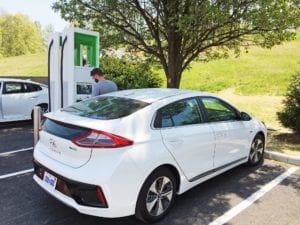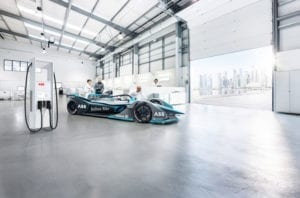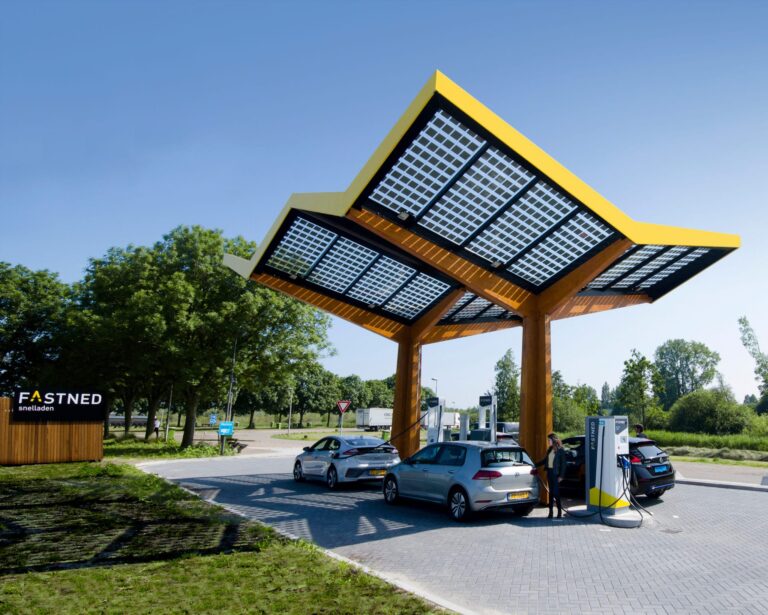Frank Muehlon, managing director for ABB’s global EV charging infrastructure business, explains why a collaborative approach and continual investment in new technology are key to delivering emission-free mobility solutions.
The growth in the EV market is undoubtedly gaining pace, with some commentators predicting that there will be 559 million EVs on the road by 2040 and 55% of all new car sales and 33% of the global fleet will be electric.
However, we are still a way off from hitting these ambitious figures, and if we are to deliver this clear vision for a sustainable, emission-free future, we need to continually innovate and develop new solutions to satisfy this increasing demand.
I believe there are three key disruptions aligned to the delivery of sustainable transportation for the future.
Firstly, we need to see continued investment in the sector, both in the development of battery technology by vehicle OEMs to enable greater range and cost efficiencies, but critically in the development of a widespread charging infrastructure network to satisfy growing demand.
In many markets, the current reality paints a different picture. When we look at the USA for example, while 200,000 EVs were sold in 2017, the country’s charging infrastructure is still lagging behind, with consumers lacking confidence and range anxiety being a major barrier to electric vehicle adoption.

Secondly, we must focus on standardisation and operability. The automotive industry only needs to look at the electric public transport sector to see that adoption rates are significantly increased as the number of charging standards decrease. If we want to create positive change for the future, now is the time to replicate this for passenger vehicles, which will need a truly collaborative approach.
Thirdly, we need to accept that we have to evolve our energy ecosystem to enable an emission-free future. A reliable power infrastructure with low maintenance costs is key for modern cities to address peaks in demand effectively. That’s why enabling safe, flexible and smart electrical networks is of crucial importance.
The integration of energy resources, the installation of smarter home technologies linked to private EV charging and the adoption of EVs with expanded battery capabilities, could in the future turn homes around the world into self-sufficient grids. Car batteries could be used to not only store energy, but that energy could also be sold back to the grid, enabling residential and commercial communities to become active participants in the energy revolution.
Currently, the pace of change, both in commercial and consumer markets, is being driven by the need for faster and higher power charging. The sector is however faced by one key challenge, the capacity of current EV batteries.

At the moment, DC charging is still too powerful for most consumer vehicles, but all that may be about to change with the launch of the first consumer car capable of taking this power, the Porsche Taycan.
While current EV batteries don’t have the capacity to store the level of charge available from a high-power charger, technologies are being developed that serve as future proof solutions that will support the development of next generation of EVs.
Meanwhile, for buses and trucks, the industry is currently limited to a maximum charge of 600kW. We are confident that there is potential for evolution here too, with 1MW charging on the horizon.
Hand in hand with technological progress, comes the need for greater collaboration, which is a powerful enabler of innovation within the EV field. High-profile players working together allows the industry to push the boundaries of technology and develop new solutions.

With the sector evolving at such a rapid rate, this need for collaboration is greater than ever. Suppliers continue to work closely with OEMs and charge point operators to ensure technology not only meets but exceeds current needs to facilitate future growth.
The market is full of opportunities for players across multi disciplines, ranging from the development of next-generation vehicles and supporting components to charging technology providers, charging operators, utilities and players in the renewables sector.
We are seeing bold moves by companies, including some of the main energy providers and OEMs, who are diversifying their portfolio to allow them to impact new parts of the value chain, particularly in the operation of charging stations.
In Europe for example, Ionity is a joint venture between BMW, Daimler, Ford and Volkswagen Group with Audi and Porsche, which aims to operate a network of about 400 fast charging stations across 24 European countries, by 2020.
Ultimately it is this collaborative approach and continual investment in new technology that will shape the future of e-mobility for generations to come.





